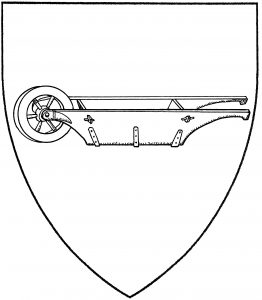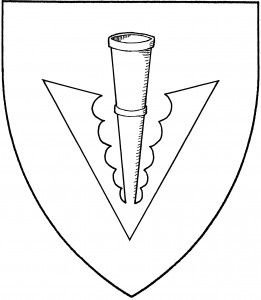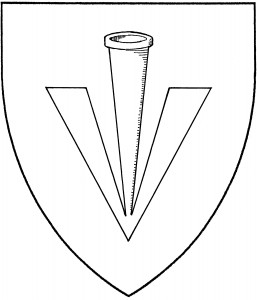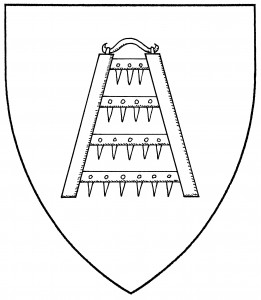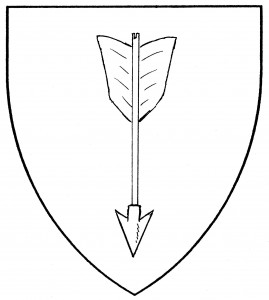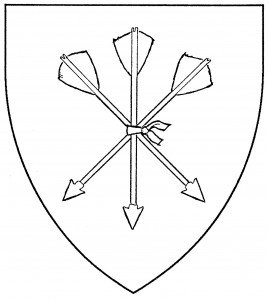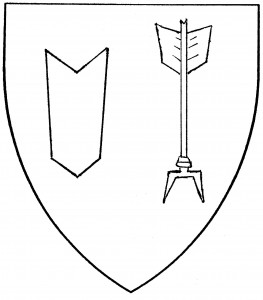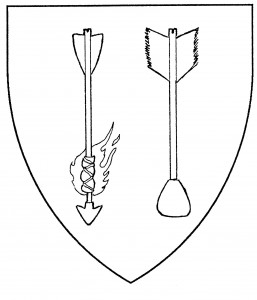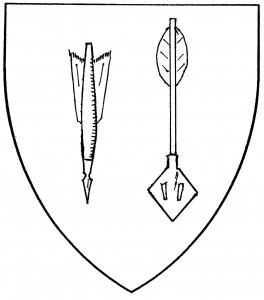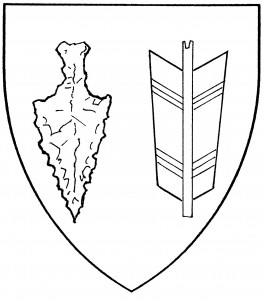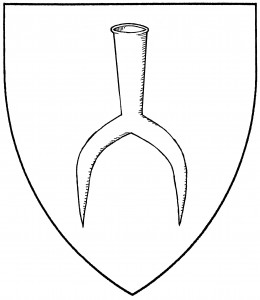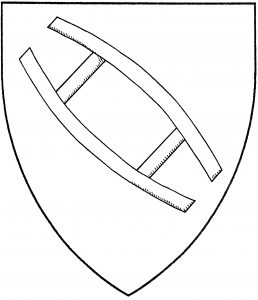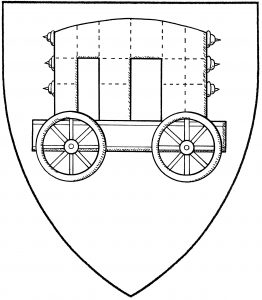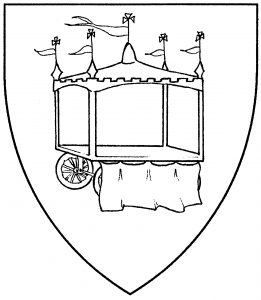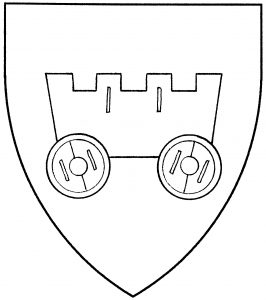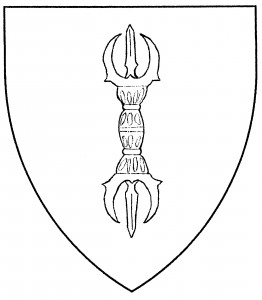Hannes zum Eichhorn bears: Per fess vert and Or, a wheelbarrow and an acorn counterchanged.
Search Results for: arrow
Pheon; Broad-arrow
A pheon is a steel arrow-head, used by bow hunters; its blades’ inner edges are engrailed, the better to penetrate the quarry. In actual use, the central shank is attached to a feathered shaft; in armory, the shaft is not shown. As an heraldic charge, the pheon dates from c.1295, in the arms of Egerton [ANA2 416]; but it is more famous as the arms of Sydney, Earl of Leicester, d.1586 [Wagner 70].
An artistic variant of the pheon is the “broad-arrow”, or “broadhead”, with straight inner edges; it was a English Royal badge c.1330 [H. Stanford London, “Official Badges”, Coat of Arms, IV(27), July 56, p.93]. In all other respects it is identical to the pheon. (Indeed, there was considerable confusion between them in period armory; thus they are considered negligibly different in Society armory.)
The pheon and broad-arrow have the point to chief by Continental default, and point to base by English default; the Society follows the English usage.
For related charges, see arrow, rogacina, spearhead.
Njal Olaf Hagarson bears: Per pale gules and Or, a pheon counterchanged.
Seaan McAy bears: Per fess indented argent and vert, three pheons counterchanged.
Richard Blayborne bears: Gules, six broadarrows Or.
Harrow
A harrow is a farming tool for breaking up and smoothing the soil of a field; it’s dragged flat across the field, sometimes weighted with stones. It’s a period charge, found in the arms of de Calchatera, mid-15th C. [Triv 93], and the canting arms of Harrow, 1610 [Guillim1 202]. The harrow is palewise, with the yoke for the rope to chief, by default.
Loxley of Côte du Ciel bears: Or, a wooden harrow proper and a chief enarched azure.
Arrow; Arrowhead
An arrow is a feathered shaft, shot from a bow or crossbow as a missile. It’s found in the allusive arms of Archer, 1320 [DBA1 10].
The arrow’s default orientation is palewise, point down. When fesswise, its default orientation is with point to sinister; this is sometimes blazoned explicitly. An “arrow proper” has a brown shaft and black head, with its feathers, or fletching, to be specified; the blazonry term for the fletching is “flighted”, e.g., “an arrow gules flighted azure.” The head and feathers are drawn greatly exaggerated in size.
A “sheaf of arrows” is a bundle of three arrows, two in saltire and one palewise, bound where they cross.
Of the variant forms of arrow in medieval armory, the most common is the “bird-bolt”, with a wide blunt tip; it’s also termed a “bird-blunt” or a “boson”. It’s a period charge, dating from c.1285, in the canting arms of Bozon [ANA2 211]. Somewhat rarer is the “forked arrow”, with a two-pronged point designed to slash, rather than pierce; it’s found in the arms of Prunnster, c.1600 [BSB 307:620], but may be more familiar as a charge found in Japanese Mon [Hawley 53].
Japanese Mon have proven the basis for several arrow-like charges in Society heraldry. In addition to the forked arrow, supra, we have the “Japanese arrow notch” (yahaza), as found in the Mon of Saiki [Hawley 54]: this is the section of the shaft with the feathers and nock, drawn in a stylized form.
Several variant types of arrows are unique to Society armory: A “fire-arrow” is an arrow with pitch-soaked cloth wrapped near the point, and enflamed. A “quarrel” is a short arrow with feathers down its length; it’s used in crossbows, rather than longbows. A “whistling arrow” is a 13th C. Mongolian artifact, with holes in the point to create a whistle as the arrow flies; as a non-European artifact, its use is considered a step from period practice.
An “arrowhead”, without qualification, is drawn simply as a generic barbed point; it’s a usual English term for the rogacina of Polish armory. An “elf-bolt” is a stone arrowhead, chipped and flaked; prehistoric specimens found by the ancients were attributed to the Little People. The “arrow fletching”, the feathered end of the shaft, is found in the Mon of Hatori Masanari, d.1596 [Hawley 54]; but as such fletchings are indistinguishable from European arrow fletchings, they are blazoned without qualification.
Finally, the “crescent-shaped arrowhead” is a forked arrowhead, with two points. It’s a period artifact; the charge (or one very similar) is found in the arms of Motringer, mid-16th C. [NW 36]. The illustration is taken from Motringer.
For related charges, see pheon, spearhead.
The Archery Marshallate bears: Sable, two arrows in saltire Or.
The Order of Artemis, of the East, bears: A sheaf of arrows azure.
Rumil Fletcher bears: Azure, three arrows Or.
Loran Redbow bears: Azure, three fire-arrows bendwise sinister in bend argent, enflamed proper.Styrbjorg Ulfethnar bears: Argent, a demi-wolf salient proper, charged upon the shoulder with an elf-bolt argent, and issuant from a valknut gules.
Evan y Helfarch ap Llewellyn bears: Erminois, on a pale gules in chief two bird blunts in saltire surmounted by an arrow inverted Or, a base counterchanged.
Kuji Ka Onimusashi bears: Vert, a sheaf of forked arrows inverted surmounted by a three-pronged vajhra fesswise Or.
Daimon Isamu bears: Argent, two axes, blades to center, between their handles two Japanese arrow notches in saltire, all gules.
Karin Ollesdotter av Augvaldsnes bears as a badge: In fess a whistling arrow inverted vert sustained by a seahorse gules.
Rees of Northwoods bears: Quarterly azure and gules, four arrowheads inverted argent.
Walkelin Montgomery bears: Argent, three arrow fletchings in pall, shafts to center, a bordure sable.
More period designs for SCA heraldry
It’s October 2019 as I write this. As I did this time last year, I’ve come up with some designs for coats of arms to be used in the SCA. My goal was to devise arms that were period in style — that would be perfectly at home in the medieval era — but that met the SCA’s stylistic rules, and as of this writing, were free of conflict.
I tried to make them accessible to submitters of every artistic level: some require only a straight-edge to draw, others require a modicum of skill. If you click on each thumbnail, you’ll get the blazon, as well as possible alternative colorations (some of these are available in more tinctures than I drew up).
They’re available to whoever would like to register them. I ask that you tell everyone where you found the design. And, though I have no way of enforcing this, I ask that you use the design given here. Changes to “make it more interesting” [sic] defeat the purpose of the endeavor, which is to have as period a design as we can get.
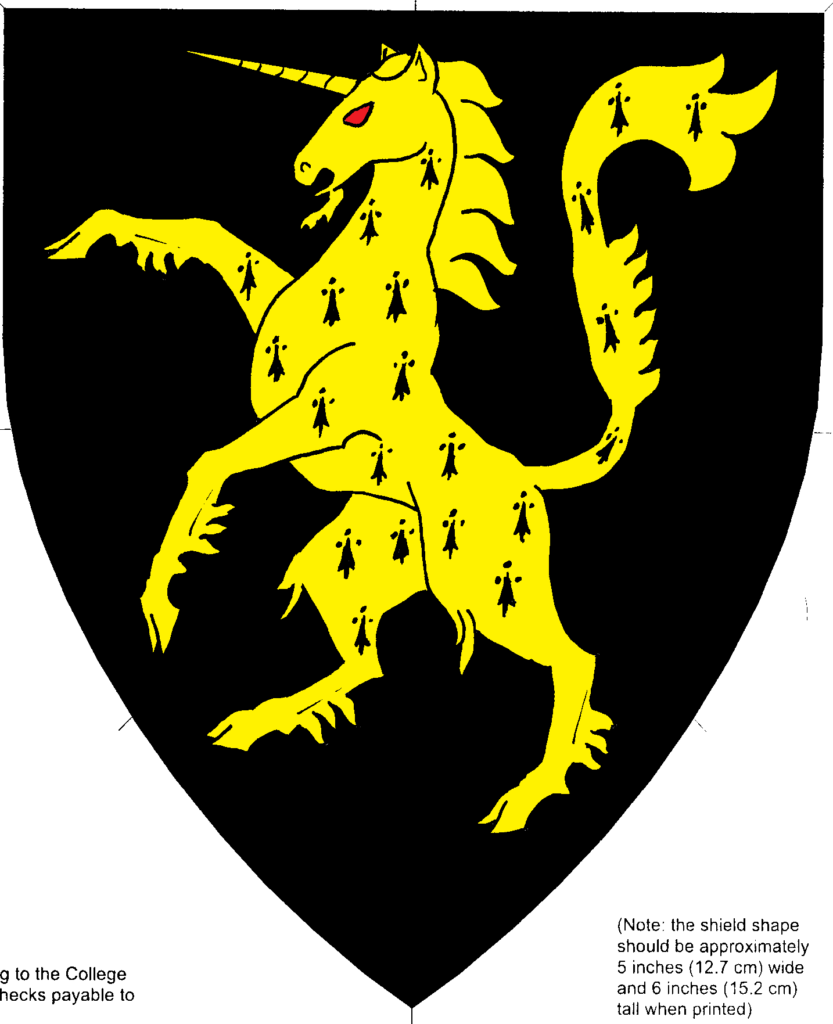
Sable, a unicorn erminois. 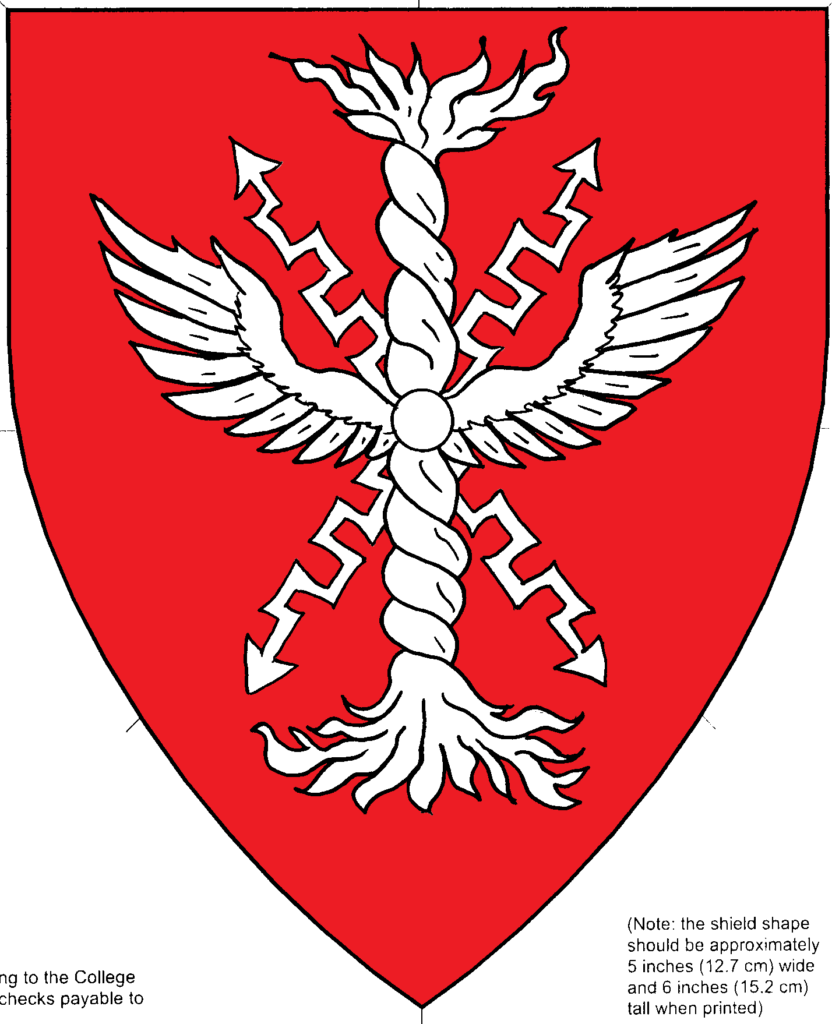
Gules, a thunderbolt argent. 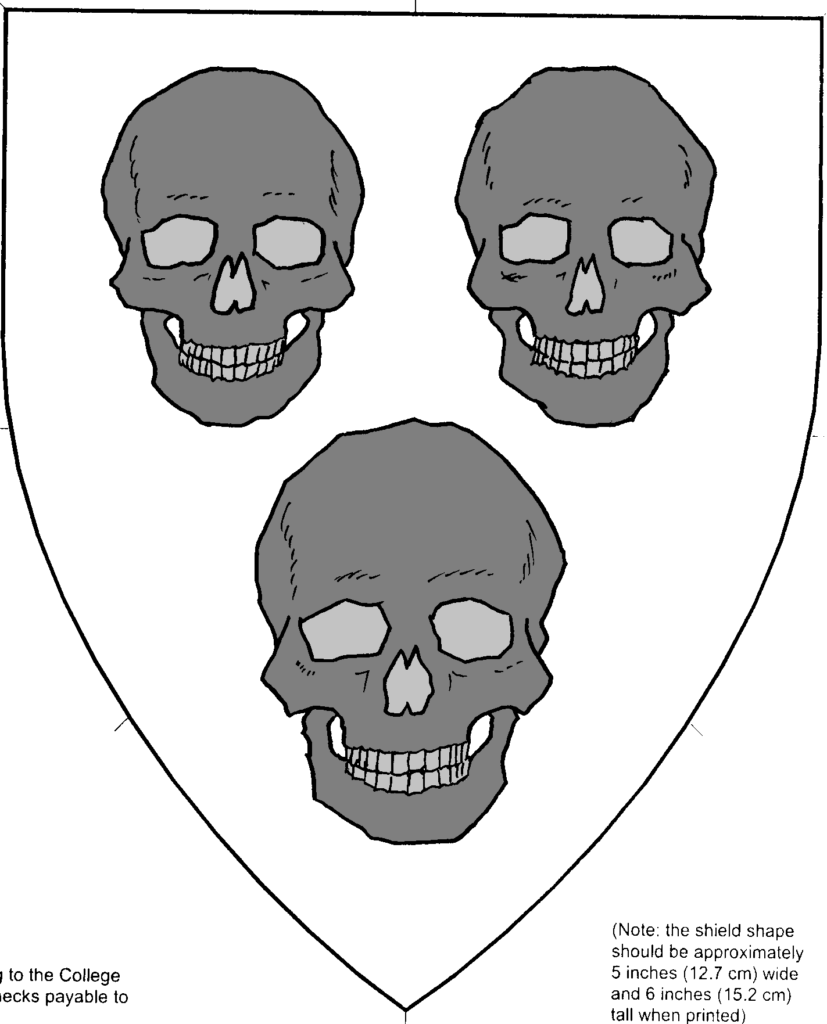
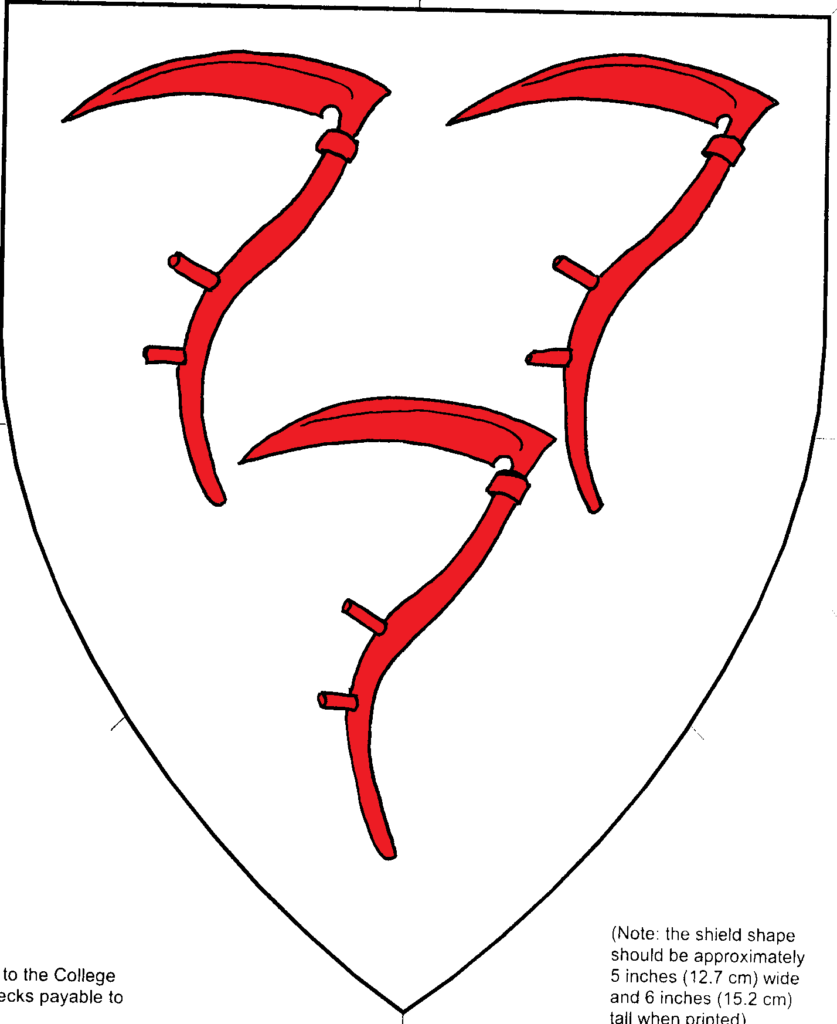
Argent, three scythes gules. 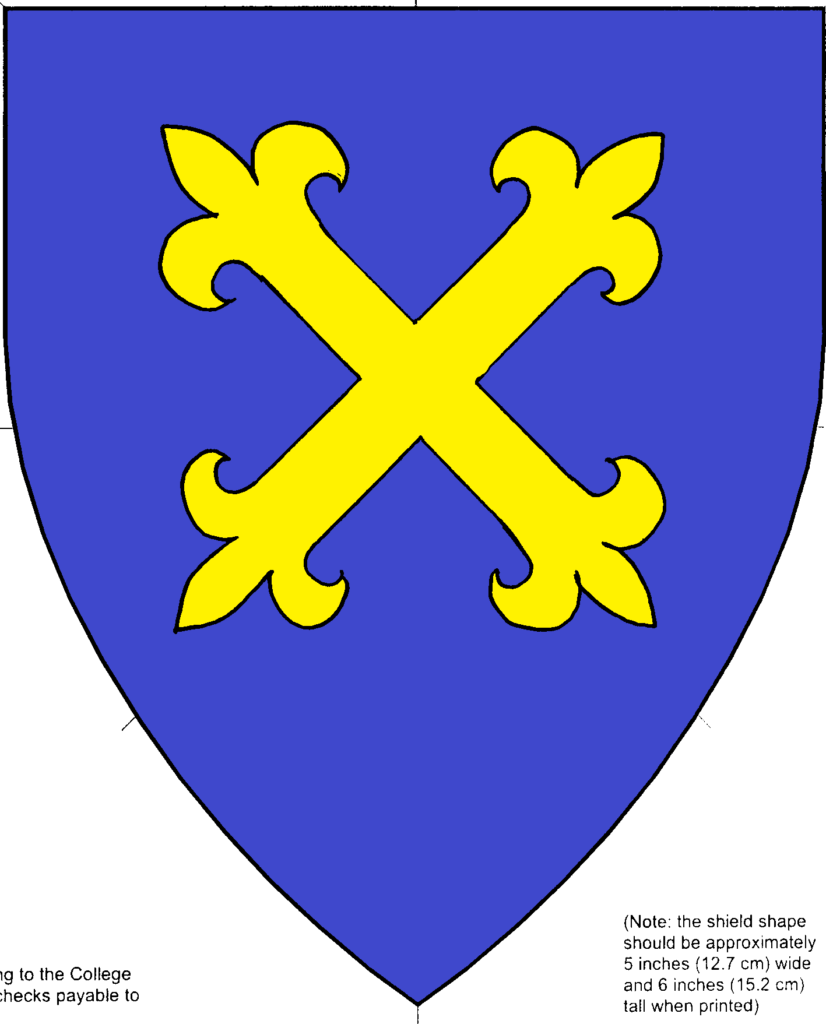
Azure, a saltire flory Or. 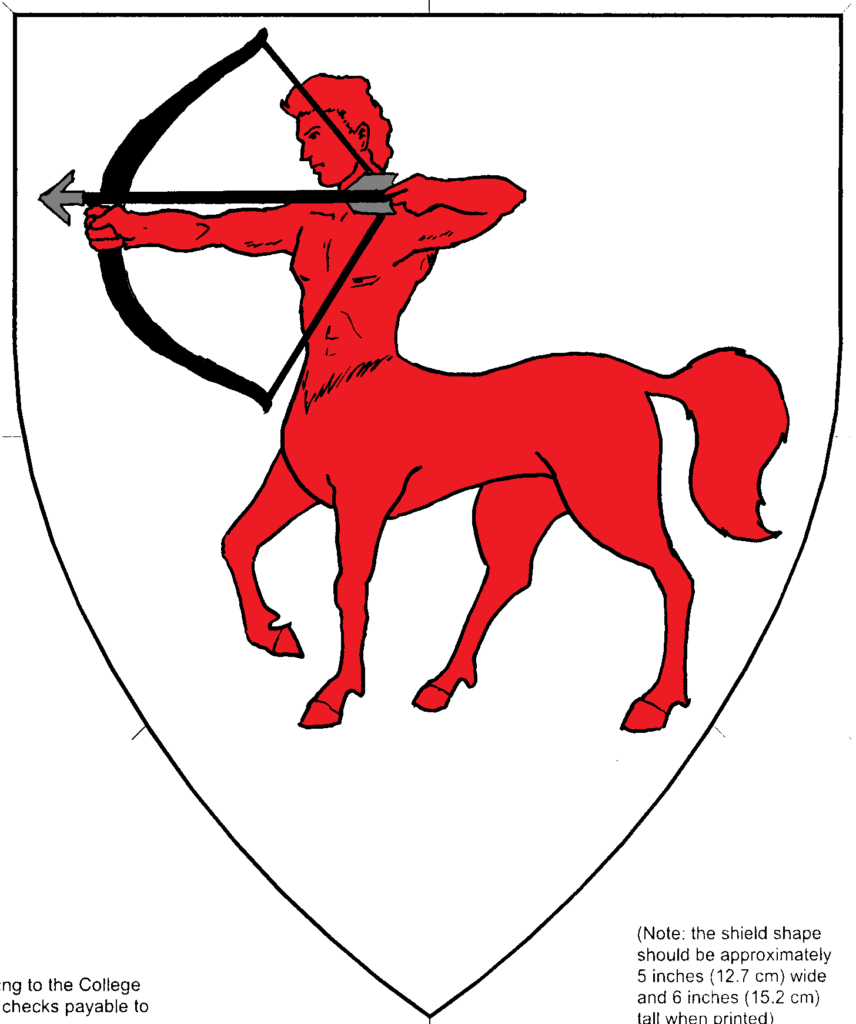
Argent, a saggitary passant gules drawing a bow and arrow sable. 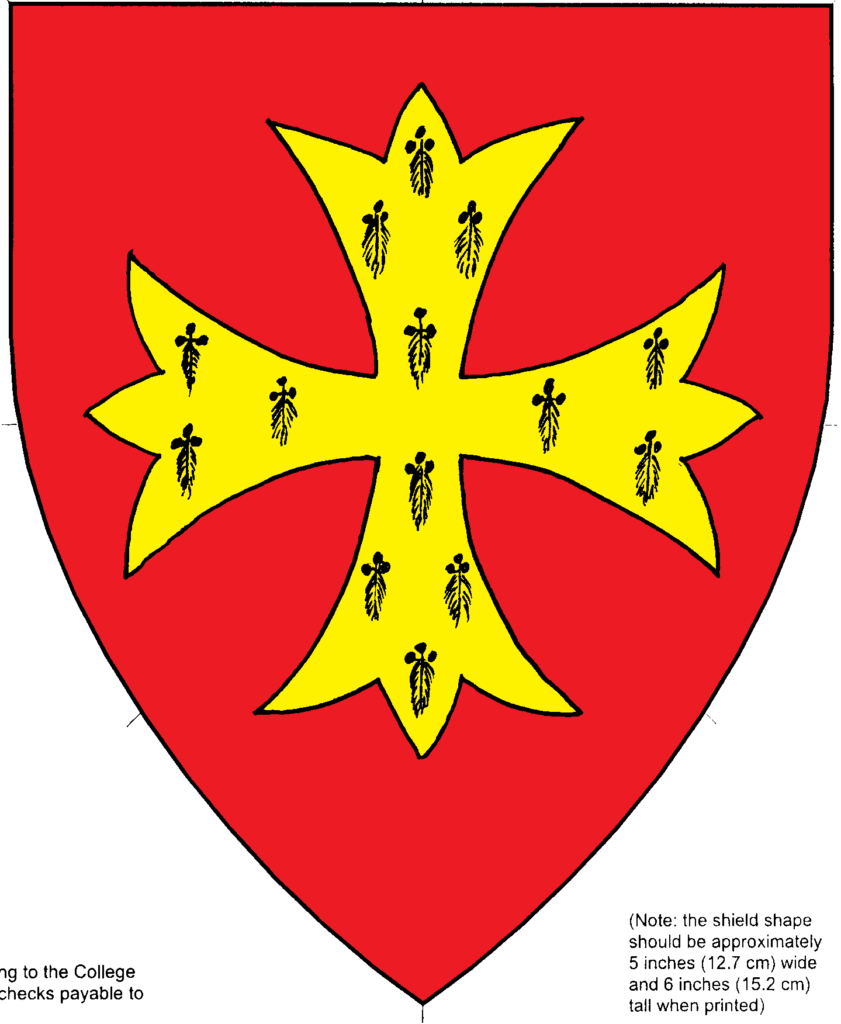
Gules, a cross patonce erminois. 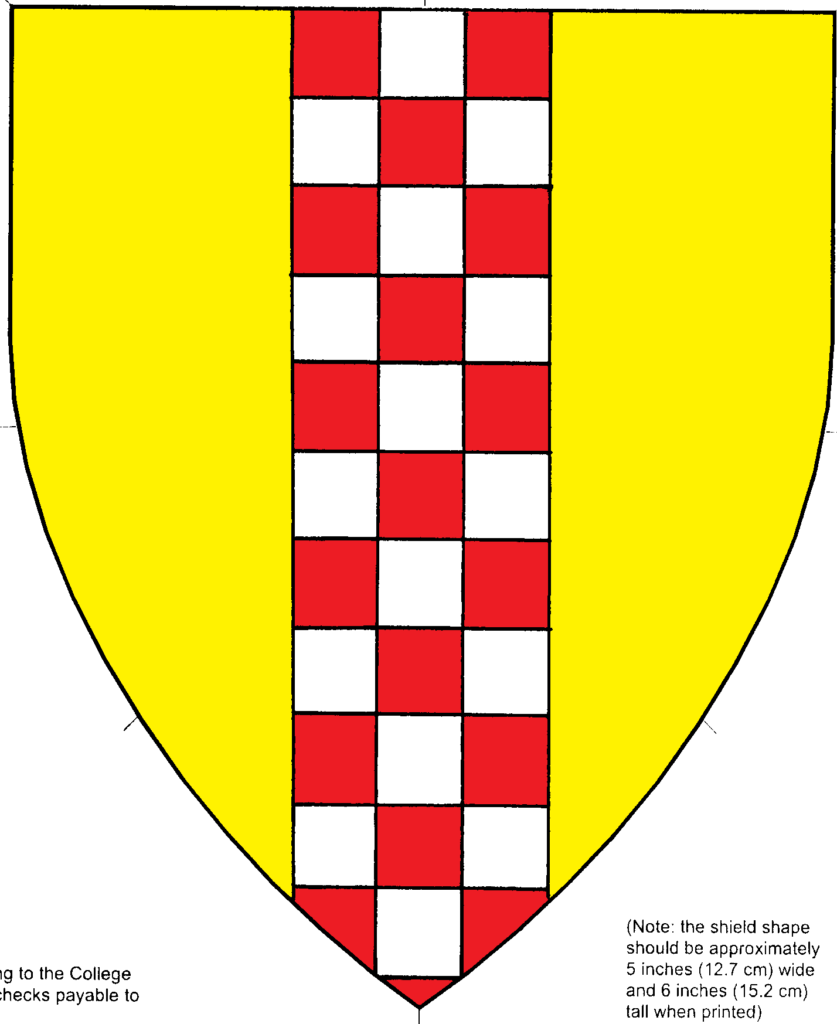
Or, a pale checky gules and argent. 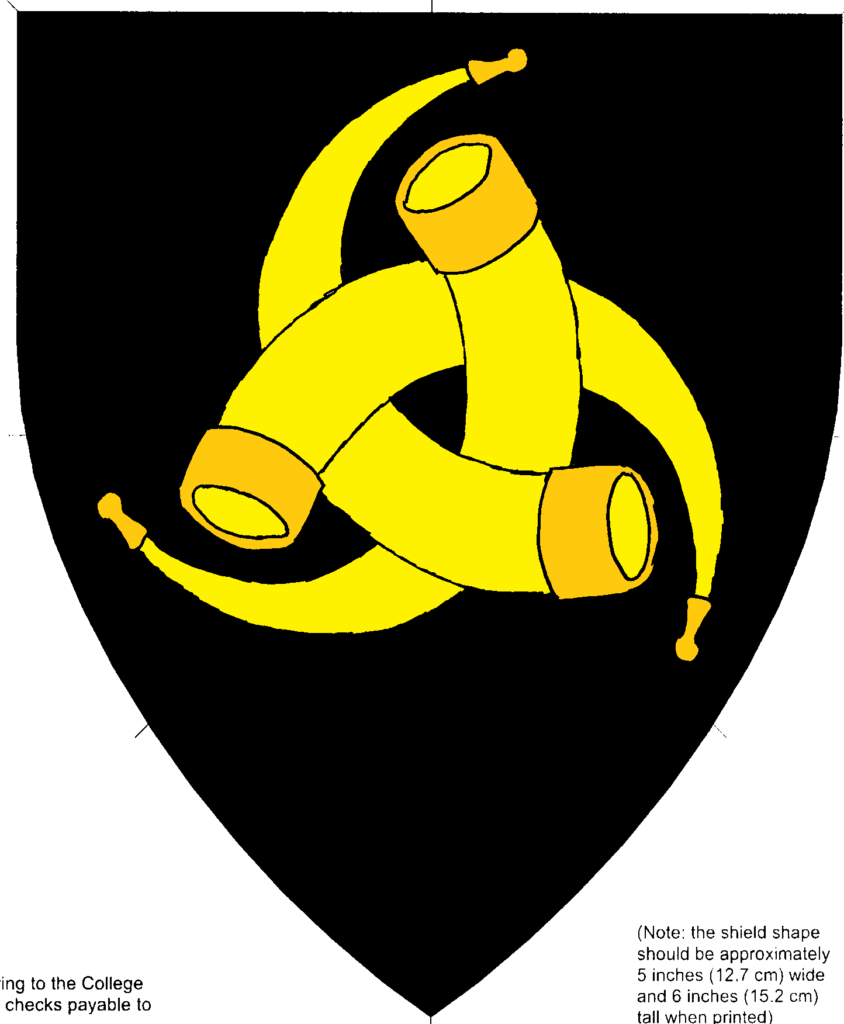
Sable, three drinking horns fretted in triangle Or. 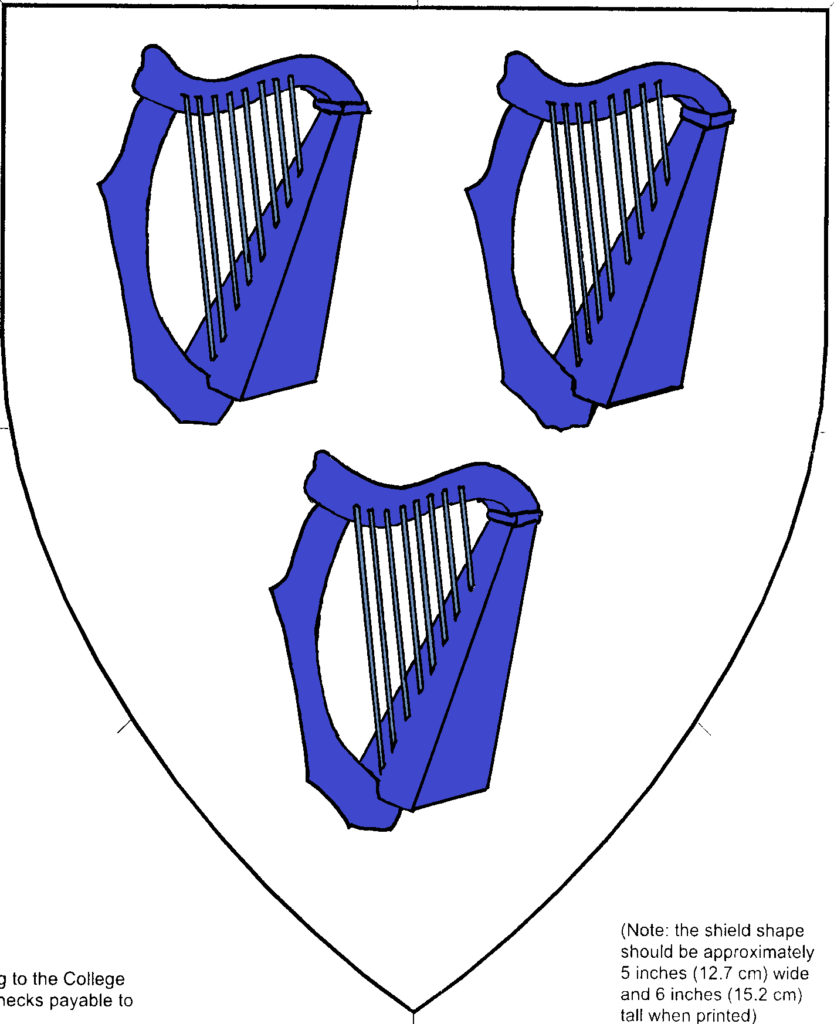
Argent, three harps azure. 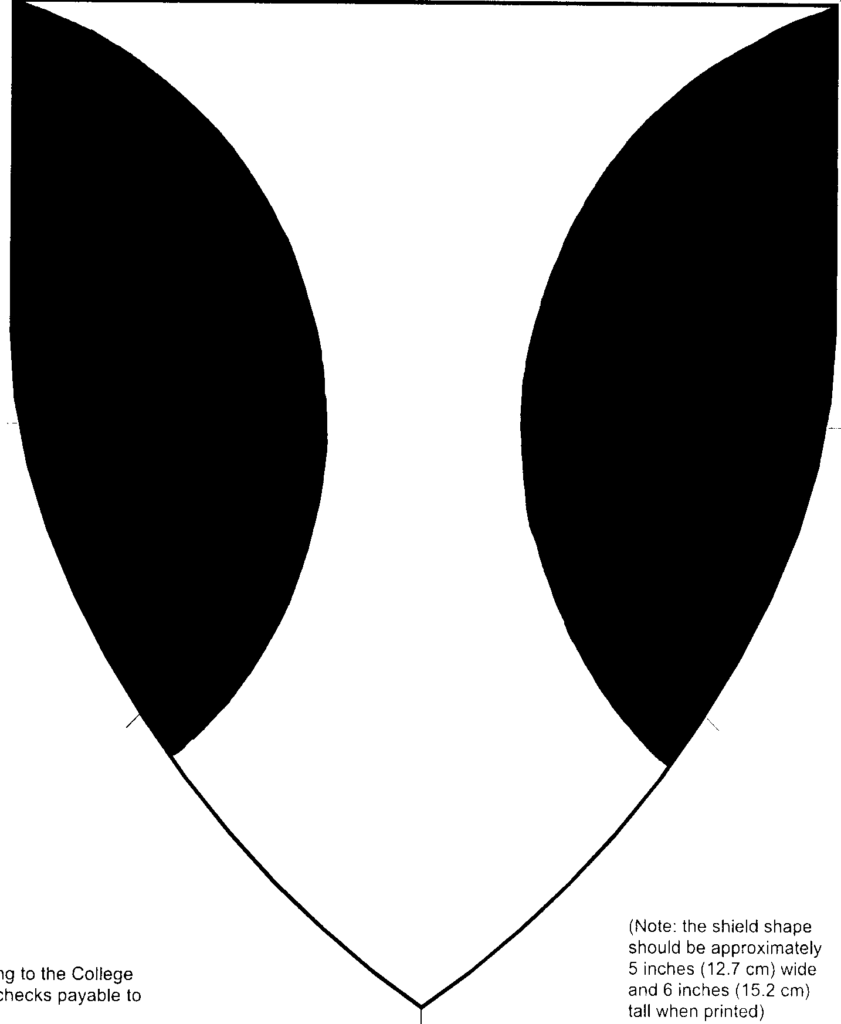
Argent, flaunches sable. 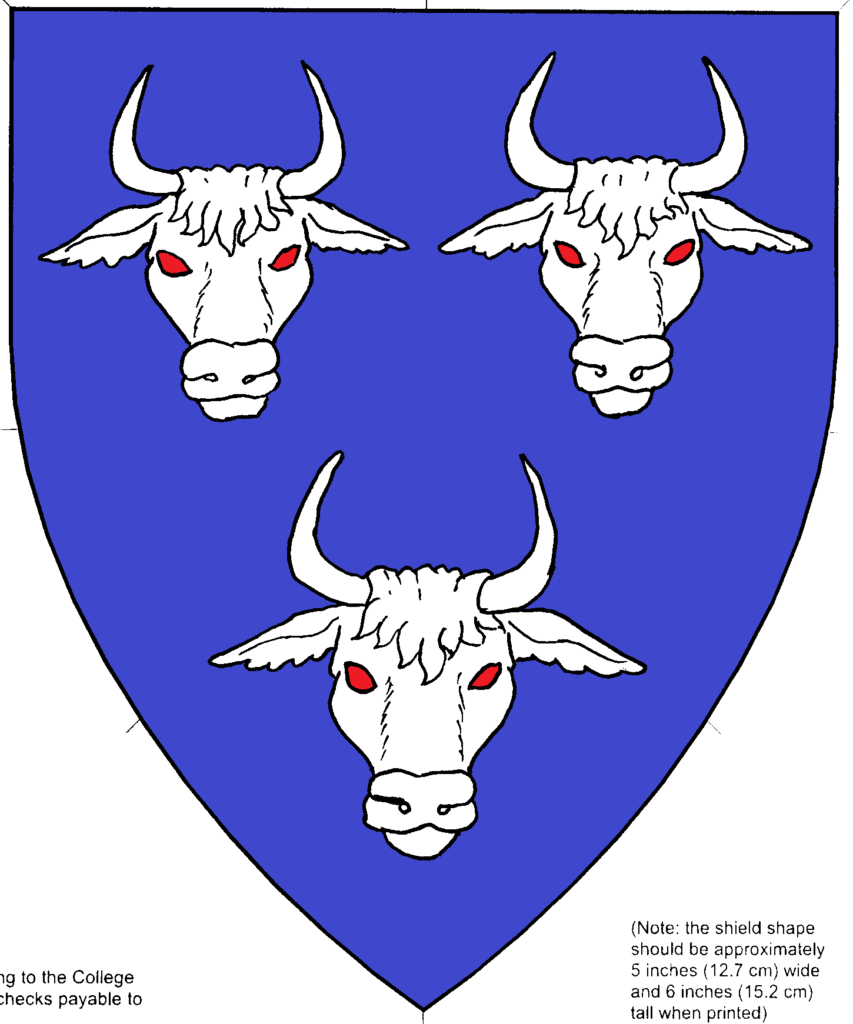
Azure, three bull’s heads cabossed argent. 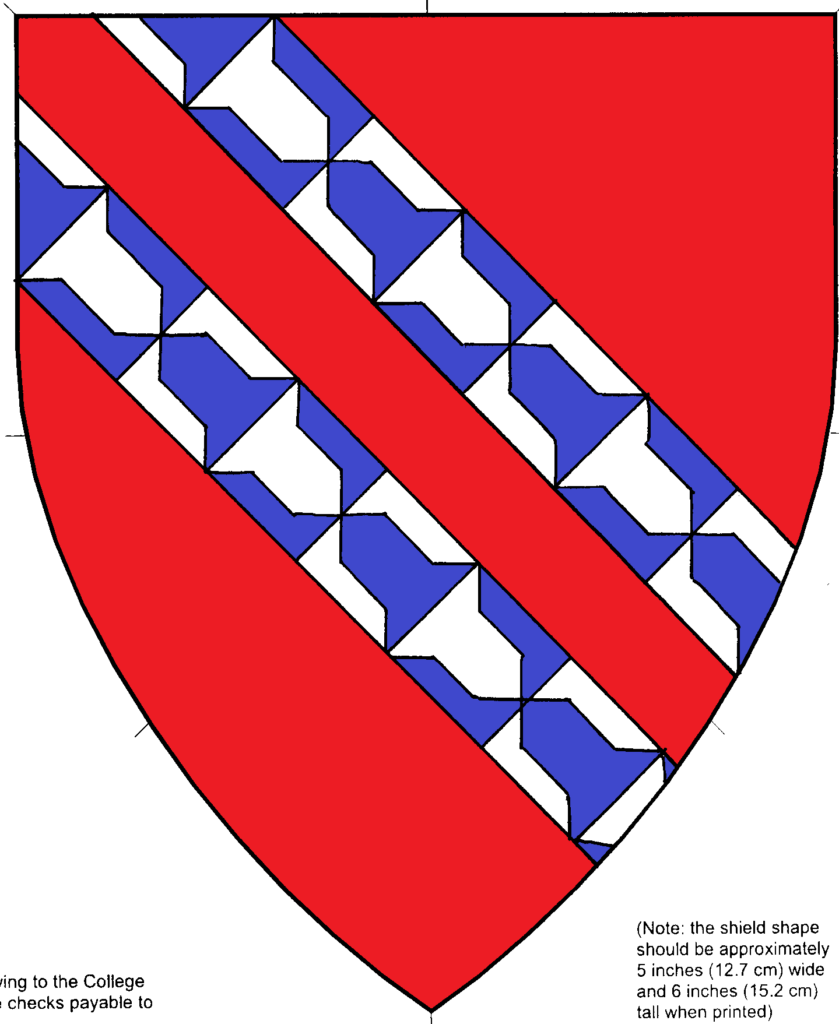
Gules, two bendlets vair. 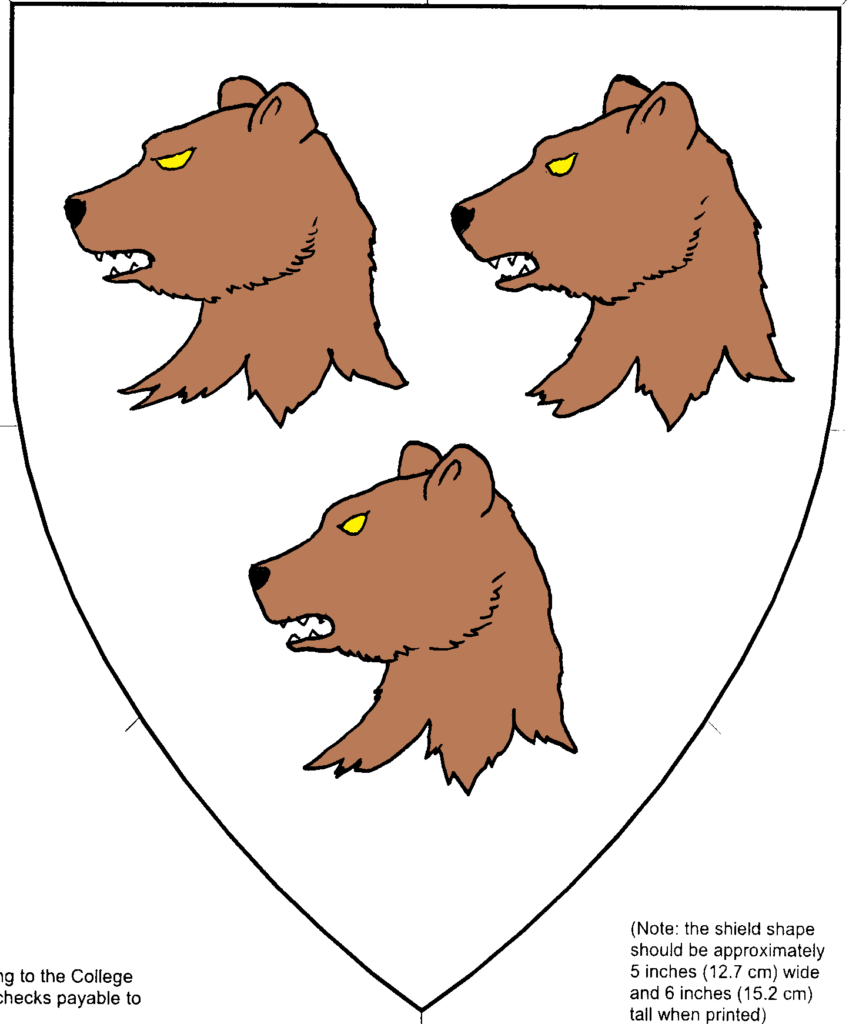
Argent, three brown bear’s heads erased proper. 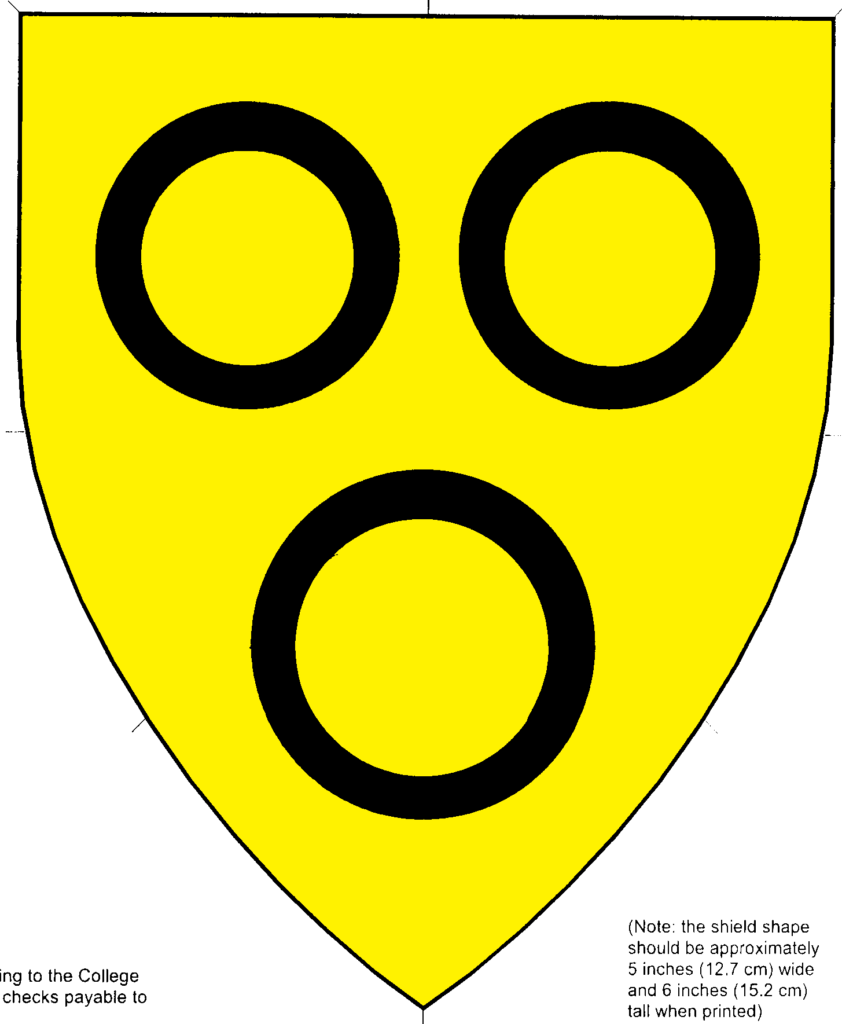
Or, three annulets sable. 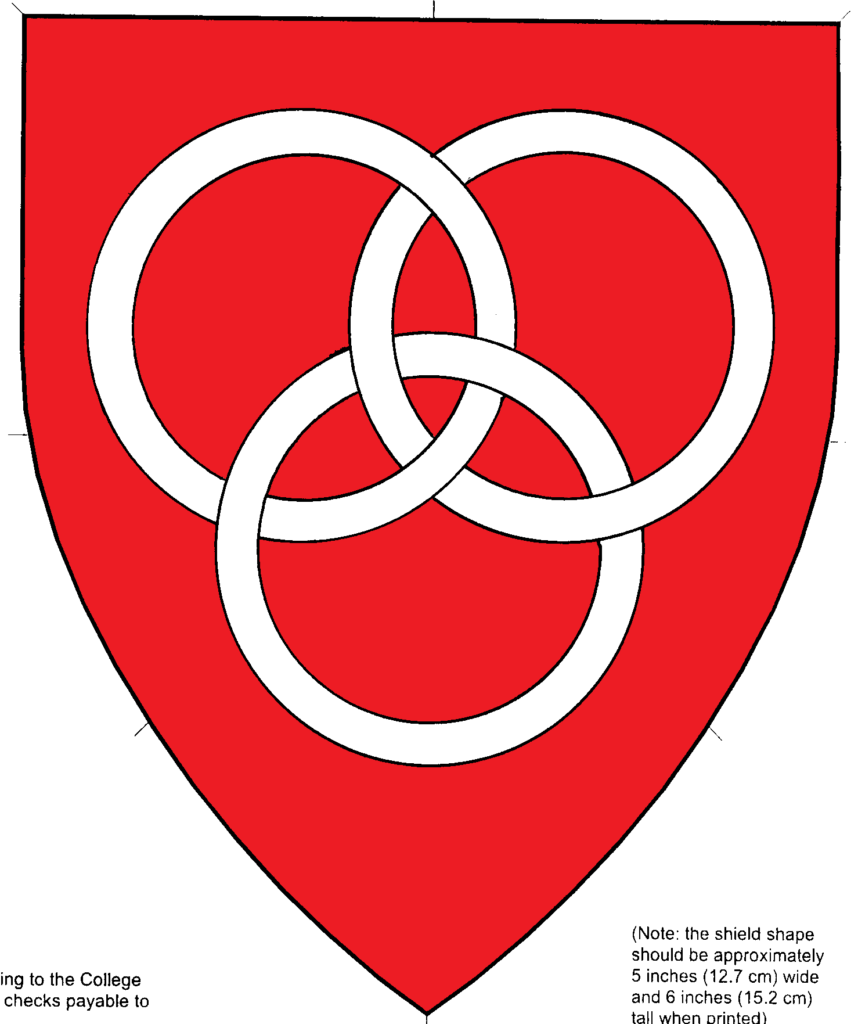
Gules, three annulets braced argent.
Winged charges
Uther vom Schwartzwald bears: Sable, a winged chalice Or.
Denys Calais bears: Gules, a key Or winged argent.
Bronwyn Schutelisworth bears: Or, a weaver’s shuttle palewise vert winged sable.
Weinleiter
Tamara Samuilova of Thamesreach bears as a badge: A weinleiter bendwise vert.
Hallr brjost Starsson bears as a badge: Per pale Or and quarterly gules and argent, a weinleiter bendwise sinister sable.
Weapons
Weapons are implements designed for combat or war; unlike armor, they are understood to be primarily offensive in nature. As medieval heraldry was originally borne by the warrior class, weapons were often used as charges.
For specific entries, see: arrow, axe, battering ram, bow, cannon, catapult, chaine shot, crossbow, fireball, flail, gun, hammer, knife, mace, pole-arm, pole-cannon, sling, spear, staff (club), streitgabelklinge, sword, trident, vajhra, zulfikar. See also quintain, quiver, scabbard.
Wagon
A two-wheeled variant, the “oxcart” (Italian baroccio), is found in the canting arms of di Barozi, mid-15th C. [Triv 76].
Society variants of the wagon include the “covered wagon”, with a cloth covering stretched over circular hoops; the illustration is taken from the Douce psalter, c.1320. Similar is the “pageant wagon”, a wheeled performance stage, with curtains and ornamentation, used in 15th Century England. Finally, there’s the “war-wagon”, with an embattled top and arrow slits. None of these variants have yet been attested in period armory; moreover, the pageant wagon carries a step from period practice. For related charges, see wheelbarrow.The Baron of Nottinghill Coill bears as a badge: Or, a pageant wagon gules, its pennon staves and pennons azure, and its frontal curtain azure charged with a cross Or.
Æsa the Fierce bears: Vert, a wagon within an annulet argent.
Gunnora Aldyne bears: Azure, on a pale between two carts argent, a mouse rampant azure.
Alail Horsefriend bears as a badge: Per fess azure and argent, a war-wagon counterchanged and enflamed to sinister chief proper.
Vajhra
A vajhra is a short bar of metal or carved stone, with clawed ends; it is a Buddhist priest’s holy symbol cum weapon, and is also known as a “priest’s lightning bolt”. The vajhra is found as a charge in Japanese Mon, as borne by Kasuga [Hawley 96], and as an artifact in period India; it has thus been accepted for Society use.
The vajhra has no Society default orientation; the number of prongs should be specified in the blazon as well. The illustration shows a three-pronged vajhra palewise.
Evan ap Llywelyn of Caernarfon bears as a badge: Sable, two vajhra in cross within a lotus blossom pierced argent.
Kuji Ka Onimusashi bears: Vert, a sheaf of forked arrows inverted surmounted by a three-pronged vajhra fesswise Or.
